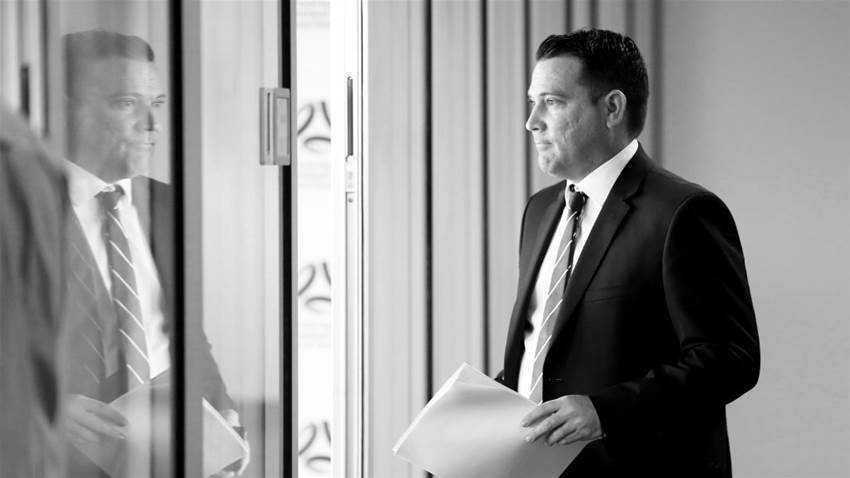The current situation Australian football finds itself in may be a blessing in disguise. While financial uncertainty is never a good thing, a chance to re-assess and build towards a realistic business model is an opportunity FFA should grab with both hands.
The 12 A-League clubs and FFA will need to be smarter with how they invest their money.
While the loss of quality players to overseas leagues due to lack of affordability is a sad thing, it is the chance the league has been waiting for to give young (and more affordable) players in the lower tiers a chance to develop, with the ultimate goal of then on selling them to foreign clubs.
Wellington Phoenix have led the way in recent times, selling Liberato Cacace to Belgian top-flight club Sint-Truiden.
With tangible evidence of a second division still missing, young players need to be given a chance in the A-League, with the lack of a genuine second tier making it harder for them to get opportunities.
Another revenue stream, such as profits from selling players, is just what clubs need and is principle number three in FFA’s recently released ‘XI Principles for the future of Australian Football.’
How this will operate going forward will be a challenge. FFA may want their cut, but clubs would want to keep most - if not all - of the spoils. This brings us to another issue. Who will get what going forward?
Some worried club owners have already demanded immediate independence from FFA, warning the A-League won’t survive in its current form, with major revenue losses experienced by FFA and clubs alike threatening to bring Australian football to a standstill.
Some fear the 2020/21 season may be delayed given that FFA has already lost $43.5M or roughly 33% of its revenue this year due to loss of sponsors pre COVID19 and financial uncertainty after it.
The FFA distributed $36.2M to A-League/W-League clubs in 2019 according to their Annual Report. The dividend will be significantly lower going forward.
The FFA dividend on average works out to be 35% of a club’s total income per year according to A-League insiders. Due to the current financial climate, this distribution has gone down by 55%.
On average clubs get 30% to 35% of their income from selling memberships and corporate packages. With uncertainty remaining around COVID19 restrictions, clubs are finding it challenging to budget for the 2020/21 year.
In a nutshell, club revenues are expected to fall 65%, leaving most clubs struggling to pay their fixed costs including player salaries.
The current A-League salary cap sits at $3.2M with the average player salary hovering at around $180,000. This is expected to go down significantly to around $2.1M, which is bitter sweet for clubs who need to save money but will now find it harder to sign the type of players needed to sell the league to fans, sponsors and broadcasters alike.
There is a school of thought that expansion could help increase both sponsorship and TV revenue, but this theoretical prospect will be hard to prove considering the A-League has struggled to capture the imagination of the public in recent times.
Canberra, Gold Coast and Wollongong have all expressed a desire to join the league, but the existing 12 clubs may even resist this given no one wants a smaller piece of the pie.
Even before COVID19, crowds were well down for both the A-League and W-League. Foxtel were looking at cutting ties anyway, with the world wide pandemic providing them with a golden opportunity to cut their losses. The $32M deal signed in July for 12 months only contained a cash component of $27M which covered the A-League, W-League, Socceroos and Matildas.
With the Socceroos and Matildas unlikely to provide much content in the coming months, all eyes and wallets will turn to the A-League which will have six games per weekend next season.
There has been no firm plans provided about the W-League with the majority of clubs struggling to break even with their women’s programs. However with women’s sport and particularly the 2023 Women’s World Cup on everyone’s minds, the W-League could potentially be another revenue maker for FFA and its clubs. FIFA and the Australian government have made it clear there is money available for the women’s game.
While the W-League will also struggle to sign the top players it has in the past, a targeted marketing campaign and quality Australian talent can bring in the crowds and television audience. A record high 879,000 Australians watched the W-League on TV in 2019/20, up 265,000 (or 43%) from the previous season. There is an opportunity right there.
With Matildas like Sam Kerr, Ellie Carpenter and co all starring in America or Europe, there is no reason why our women footballers can’t be part of Principle Three. There is no doubt Australian women footballers are loved abroad, and the next few years provides a chance to enhance this.
FFA have a chance to make things right, and perhaps the current situation is the opportunity it needs.
Related Articles

Leckie seals new marquee deal as Good, Maclaren head to Asia

'Timing not right': Montemurro's verdict on Matildas vacancy













